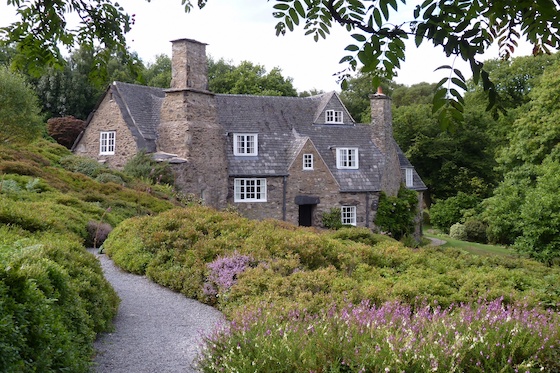This year marks the 150th anniversary of De Montfort University (DMU). It began life as the Leicester School of Art back in 1870, teaching art, technical drawing and architecture, and helping to drive forward new ideas in British design.
Over the years, thousands of people from all over Leicester and Leicestershire have studied or taught at DMU. Even though it has students from all over the world, nearly half come from the region.
It has been through various incarnations – Leicester School of Art, Leicester Technical School, the Leicester Municipal Technical and Art School and Leicester Colleges of Art and Technology, Leicester Polytechnic, and now De Montfort University.
Here, we take a look through the archives at how each decade has shaped the institution:
 1870s
1870sThe first headteacher of Leicester School of Art was Wilmot Pilsbury, a landscape artist. He later confessed he feared just two or three students would be in his first class. He need not have worried – by the end of the first year, it was one of the largest art schools in the country.
In its first year, it attracted 269 students, 90 more than the average art school in the UK at the time.
Pilsbury was a champion for artists in Leicester and Leicestershire, and an early member of Leicester Society of Artists. He spent 11 years at the helm of the school, and by the time he retired in 1881 Leicester was fast gaining a reputation as ‘one to watch’ in design circles.
 1880s
1880s One of the school’s most famous early pupils was Arts & Crafts designer Ernest Gimson, creator of Leicestershire’s only National Trust property Stoneywell, pictured above.
Gimson was working for Leicester architect Isaac Barradale when he studied at the Leicester School of Art, which by now had moved next door to New Walk Museum.
He studied advanced building construction and architecture and entered competitions, winning national medals for suburban housing and furniture design.
Gimson met William Morris in Leicester when he was invited to the city to give a talk. Morris was the father figure of the Arts and Crafts movement, which formed in reaction to the industrial revolution and championed a return to crafts and design in the face of mass market production.
 1890s
1890s Leicester School of Art merged with Leicester Technical School to become Leicester Municipal Technical and Art School. With the new name came a new home, and it moved into a £25,000 purpose-built building known today as the Hawthorn Building.
The building we know today was in fact built in stages, so it was not until the late 1930s that it was finished. During the final build, two arches of the Church of the Annunciation were found embedded in the walls of a cellar.
It was known as the Main Building until 1969 when it was renamed for John H Hawthorn, the principal of Leicester Technical School.
 1900s
1900s The Leicester School of Pharmacy opened in 1909 teaching ‘pharmaceutical chemistry’, part time. After the war it offered full-time courses for ex-servicemen. Within 20 years it was considered one of the best pharmacy courses in the UK and attracted students from all over the country.
 1910s
1910s Staff and students enlisted to fight in the First World War. The Technical School’s engineering workshop was used to make munitions and test shock absorbers for aircraft.
A treasure of the DMU Archive is the Roll of Honour listing 177 staff and students who served during the First World War, including 20 who lost their lives.
From 1916, the school received applications from ex-servicemen wanting to learn a new trade due to war injuries, and tailored classes were soon established to help students with disabilities.
After the war, it was revealed that the Head of the Electrical Engineering Department, Ernest Edmond Brooks, had been working with the Admiralty on secret research relating to electrical devices for destroying enemy submarines during the First World War.
 1920s
1920s After the war, the school met to consider how best to support the industries and businesses of Leicester. Courses included sign writing, cabinet making, print making and more.
General classes were also held for returning soldiers and apprentices, who went to refresh their knowledge before returning to work.
 1930s
1930s Two arches from the Church of the Annunciation of the Blessed Virgin Mary were found embedded into the walls of a cellar during work to extend the Hawthorn Building. They were preserved, and can now be seen at DMU Heritage Centre.
The arches, which are Grade II listed, are the only surviving structures of the Church, founded in 1353 by Henry, Earl of Lancaster.
The church was originally built to house a holy relic, reputed to be a thorn from the crown of thorns worn by Jesus before his Crucifixion. The church was where the body of Richard III was publicly displayed after the Battle of Bosworth in 1485.
Posted on Monday 25 May 2020